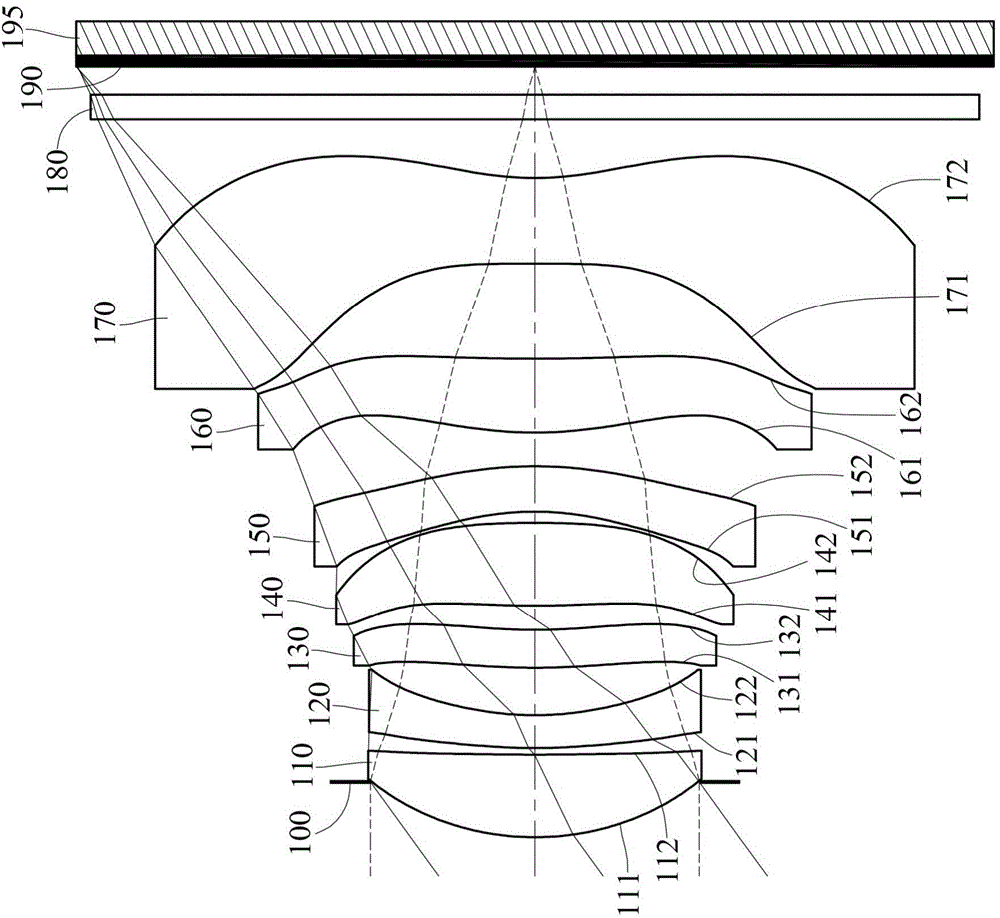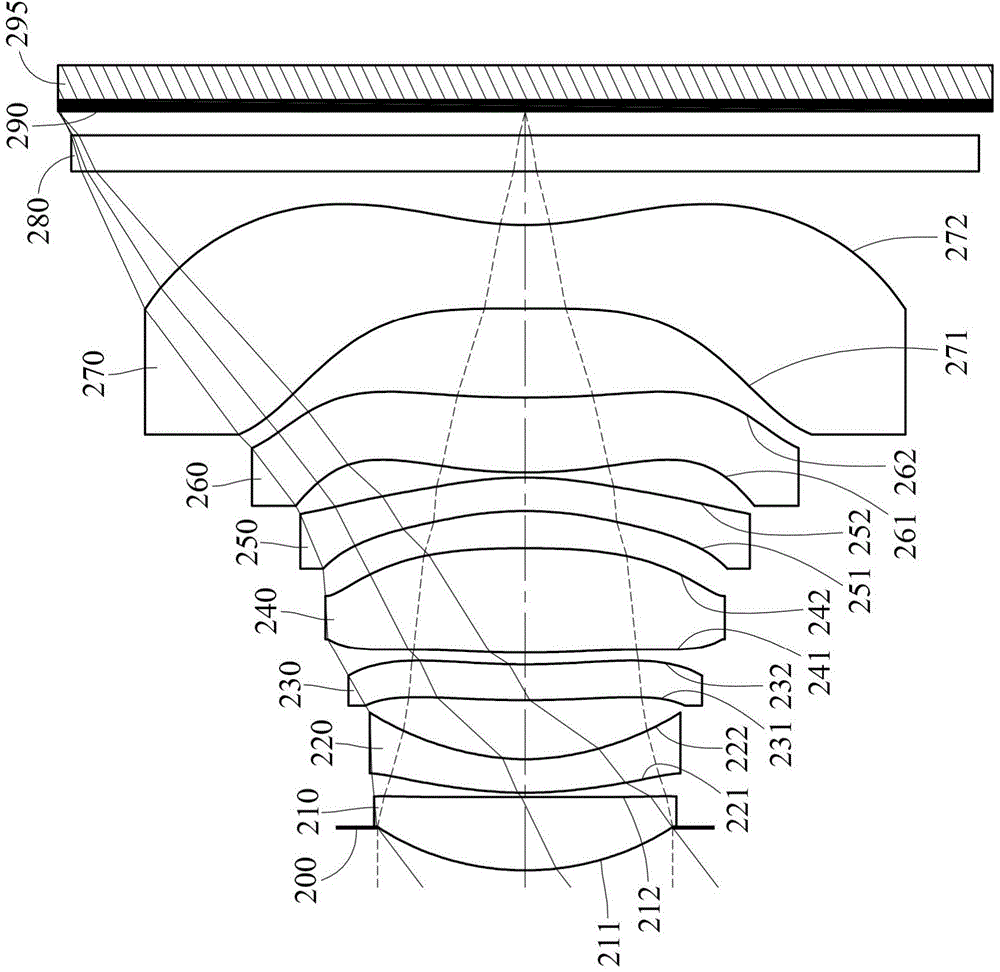Photographic system, image pickup device and electronic device
A technology of image side and dispersion coefficient, which is applied in the fields of imaging devices, electronic devices, and photographic systems, and can solve problems such as the large number of lenses, the inability to meet the demand, and the miniaturization of the unfavorable optical system.
- Summary
- Abstract
- Description
- Claims
- Application Information
AI Technical Summary
Problems solved by technology
Method used
Image
Examples
no. 1 example
[0116] Please refer to figure 1 and figure 2 ,in figure 1 A schematic diagram of an imaging device according to a first embodiment of the present invention is shown, figure 2 From left to right are the spherical aberration, astigmatism and distortion curves of the first embodiment. Depend on figure 1 It can be seen that the image capturing device includes a photographic system (not otherwise labeled) and an electronic photosensitive element 195 . The photographic system includes an aperture 100, a first lens 110, a second lens 120, a third lens 130, a fourth lens 140, a fifth lens 150, a sixth lens 160, a seventh lens 170, and an infrared lens from the object side to the image side. The filter element (IR-cut Filter) 180 and the imaging surface 190 are filtered. Wherein, the electronic photosensitive element 195 is disposed on the imaging surface 190 . There are seven lenses (110-170) with refractive power in the photography system. The first lens 110 , the second len...
no. 2 example
[0149] Please refer to image 3 and Figure 4 ,in image 3 A schematic diagram of an imaging device according to a second embodiment of the present invention is shown, Figure 4 From left to right are the spherical aberration, astigmatism and distortion curves of the second embodiment. Depend on image 3 It can be seen that the image capturing device includes a photographic system (not otherwise labeled) and an electronic photosensitive element 295 . The photographic system includes an aperture 200, a first lens 210, a second lens 220, a third lens 230, a fourth lens 240, a fifth lens 250, a sixth lens 260, a seventh lens 270, and an infrared lens from the object side to the image side. The filter element 280 and the imaging surface 290 are filtered out. Wherein, the electronic photosensitive element 295 is disposed on the imaging surface 290 . There are seven lenses (210-270) with refractive power in the photography system. The first lens 210 , the second lens 220 , th...
no. 3 example
[0166] Please refer to Figure 5 and Figure 6 ,in Figure 5 A schematic diagram of an imaging device according to a third embodiment of the present invention is shown, Figure 6 From left to right are the spherical aberration, astigmatism and distortion curves of the third embodiment. Depend on Figure 5 It can be seen that the image capturing device includes a photographic system (not otherwise labeled) and an electronic photosensitive element 395 . The photography system includes the first lens 310, aperture 300, second lens 320, third lens 330, fourth lens 340, fifth lens 350, sixth lens 360, seventh lens 370, infrared The filter element 380 and the imaging surface 390 are filtered out. Wherein, the electronic photosensitive element 395 is disposed on the imaging surface 390 . There are seven lenses (310-370) with refractive power in the photography system. The first lens 310 , the second lens 320 , the third lens 330 , the fourth lens 340 , the fifth lens 350 , the...
PUM
 Login to View More
Login to View More Abstract
Description
Claims
Application Information
 Login to View More
Login to View More - R&D
- Intellectual Property
- Life Sciences
- Materials
- Tech Scout
- Unparalleled Data Quality
- Higher Quality Content
- 60% Fewer Hallucinations
Browse by: Latest US Patents, China's latest patents, Technical Efficacy Thesaurus, Application Domain, Technology Topic, Popular Technical Reports.
© 2025 PatSnap. All rights reserved.Legal|Privacy policy|Modern Slavery Act Transparency Statement|Sitemap|About US| Contact US: help@patsnap.com



